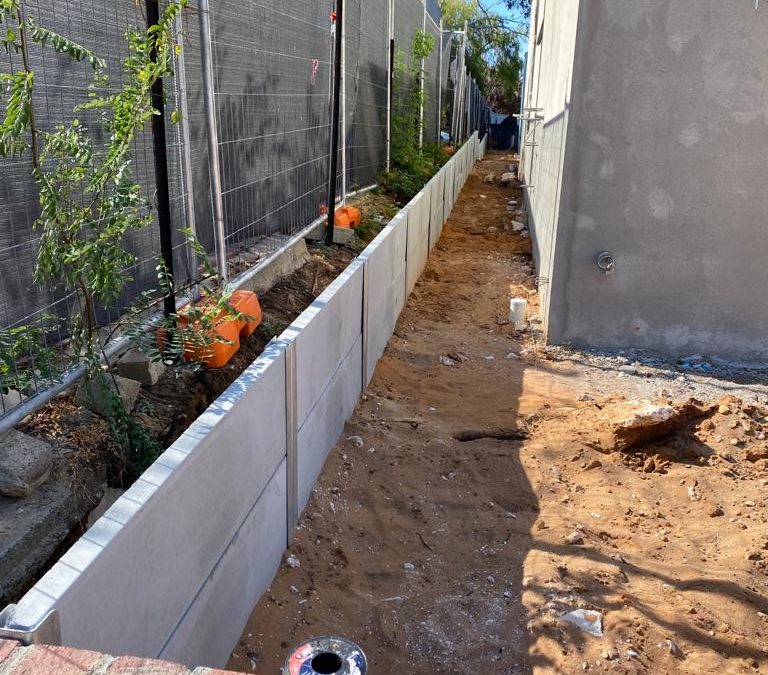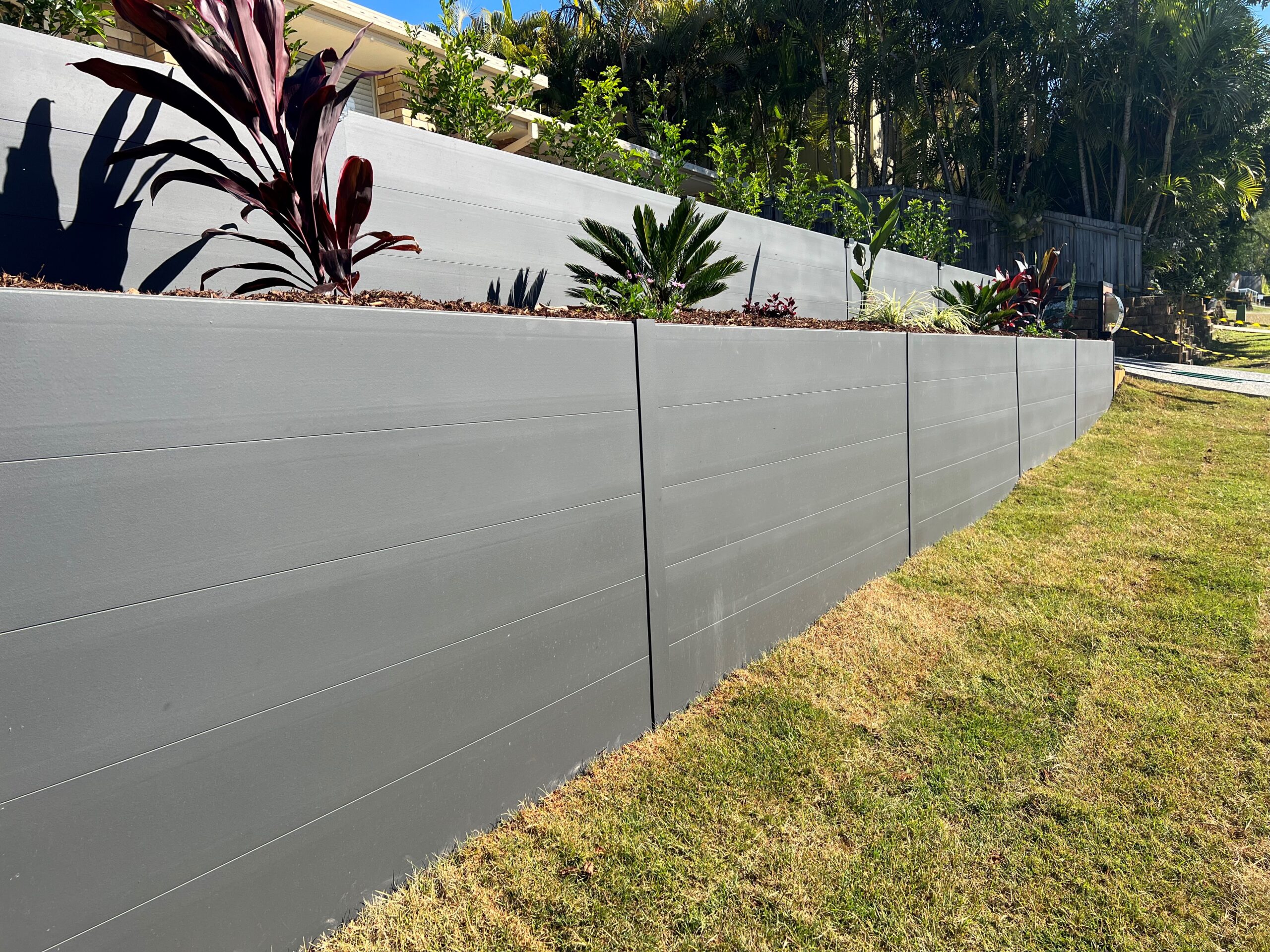The Ultimate Guide to Preserving Retaining Walls Sunshine Coast
Enhancing Property Stability: The Function of Retaining Walls in Dirt Retention and Disintegration Control
Retaining wall surfaces stand as quiet guardians, playing a critical function in soil retention and erosion control. By checking out the nuances of various types, design factors to consider, building techniques, and upkeep suggestions associated with preserving wall surfaces, a much deeper understanding of their critical duty in improving home stability arises.
Importance of Retaining Walls in Security
Maintaining wall surfaces play a crucial role in holding back soil, avoiding erosion, and developing level surfaces in sloped areas. By offering structural support, maintaining wall surfaces aid to rearrange side stress created by dirt, preventing landslides and slippage.
Preserving walls are specifically important in unequal or uneven terrains where soil erosion is an usual event. Without ample assistance, dirt erosion can result in the degradation of landscapes, compromising the integrity of structures and posturing threats to citizens. Preserving wall surfaces function as obstacles, supporting the soil and stopping it from changing downhill throughout heavy rainfall or various other ecological stressors.
Furthermore, retaining wall surfaces use long-lasting benefits by reducing upkeep prices related to soil erosion and land instability. By purchasing properly designed preserving wall surfaces, property proprietors can guarantee the longevity and sustainability of their landscapes while advertising a risk-free and aesthetically attractive environment.

Kinds Of Retaining Walls for Disintegration Control
Gravity maintaining wall surfaces are durable frameworks that count on their weight to withstand the stress of the soil behind them. Cantilever maintaining wall surfaces, on the other hand, are developed with a thicker base and make use of a lever arm to endure the dirt stress.
For taller walls or where area is a restraint, anchored maintaining wall surfaces are often utilized. These wall surfaces make use of cables or strips that are anchored into the dirt or rock behind the wall surface to provide additional support. One more type, the sheet heap preserving wall, is optimal for locations with soft dirt. Retaining Walls Sunshine Coast. These wall surfaces contain interlocking sheets that are driven into the ground to create a barrier against soil erosion. When choosing the ideal kind of retaining wall for erosion control, elements such as soil structure, wall surface height, and site conditions should be meticulously taken into consideration to ensure long-lasting stability and effectiveness.
Design Factors To Consider for Soil Retention
When taking into consideration style aspects for effective dirt retention services,Incorporating the concepts of structural design and ecological sustainability is vital. When designing for dirt retention, it is important to assess the details needs of the website, including dirt structure, water drainage patterns, and incline stability. The elevation and location of the preserving wall are critical variables that influence the total style. Engineers have to also take into consideration the pressure applied by the kept dirt and potential side loads to make certain the structure's stability over time.
Moreover, the product selection for the keeping wall surface is crucial in boosting durability and capability. Concrete, timber, gabion baskets, and natural stone prevail products used in keeping wall building and construction, each with its unique advantages and considerations. Appropriate water drainage mechanisms, such as weep openings and French drains, ought to be incorporated into the layout to prevent water build-up behind the wall, which can result in structural failure and disintegration.
Building Methods for Preserving Walls
When executing design factors to consider for reliable soil retention, the construction techniques for preserving wall surfaces play an important function in ensuring architectural honesty and long-lasting stability. One usual method is the gravity wall, which counts on the weight and mass of the wall itself to resist the stress of the kept soil.
An additional commonly used building and construction technique is the cantilevered wall surface, which uses a concrete piece structure that expands in reverse into the preserved dirt. This design supplies additional stability and appropriates for tool to high maintaining walls. For taller structures, enhanced dirt strategies such as using geogrids or dirt nails can be used to boost the wall surface's stamina and security.

Upkeep Tips for Home Security
To ensure long-term property security, normal maintenance practices are crucial for maintaining the honesty of maintaining walls and preventing erosion concerns. Cleaning the surface area of the maintaining walls can additionally aid keep their architectural stability by removing dust, debris, and vegetation that can deteriorate the wall surface over time.
Along with visual examinations and cleaning, it is essential to examine the drainage systems related to the preserving wall surfaces. Making sure that drains are free from obstructions and operating correctly can prevent water accumulation behind the walls, which can cause pressure and prospective failure. Properly working drainage systems are crucial for managing water circulation and reducing the danger of disintegration.
Consistently preserving and monitoring maintaining walls according to these pointers can expand their life expectancy and add to the look here overall stability of the residential click here to read or commercial property.
Final Thought
To conclude, keeping wall surfaces play a crucial role in enhancing residential property security by preventing soil disintegration and retaining dirt in position. By utilizing different sorts of preserving wall surfaces and considering layout and construction techniques, home proprietors can effectively control erosion and preserve the stability of their land. Routine maintenance of maintaining wall surfaces is vital to make certain lasting security and defense versus disintegration. Effectively constructed and maintained keeping walls are essential elements in preserving residential or commercial property stability.
For taller wall surfaces or where area is a restriction, anchored keeping wall surfaces are often employed. These walls make use of cables or strips that are anchored into the soil or rock behind the wall surface to offer added assistance. When choosing the appropriate kind of keeping wall surface for disintegration control, elements such as dirt structure, wall surface elevation, and site problems must be carefully taken into consideration to guarantee lasting security and efficiency.
One usual method is the gravity wall surface, which depends on the weight and mass of the wall surface itself to withstand the stress of the maintained dirt. Cleaning up the surface area click to read more of the keeping wall surfaces can also aid maintain their architectural stability by getting rid of dirt, particles, and vegetation that might damage the wall over time.